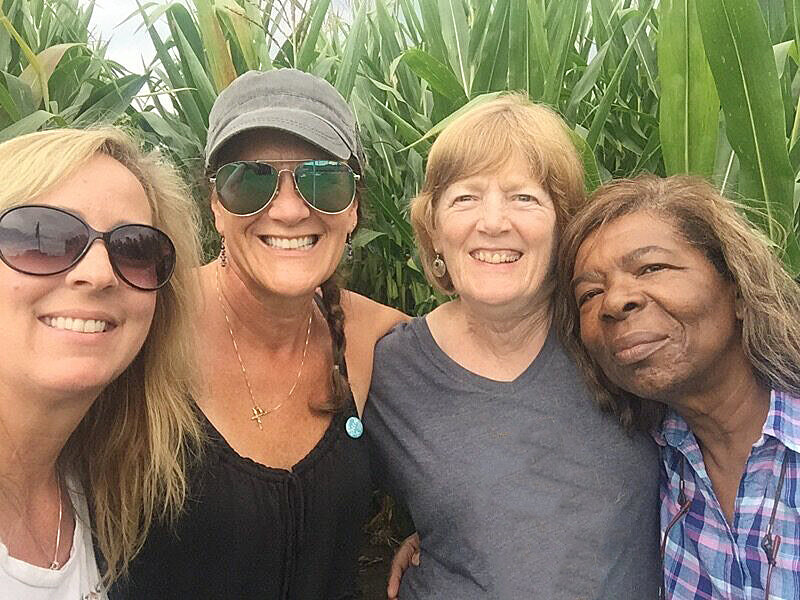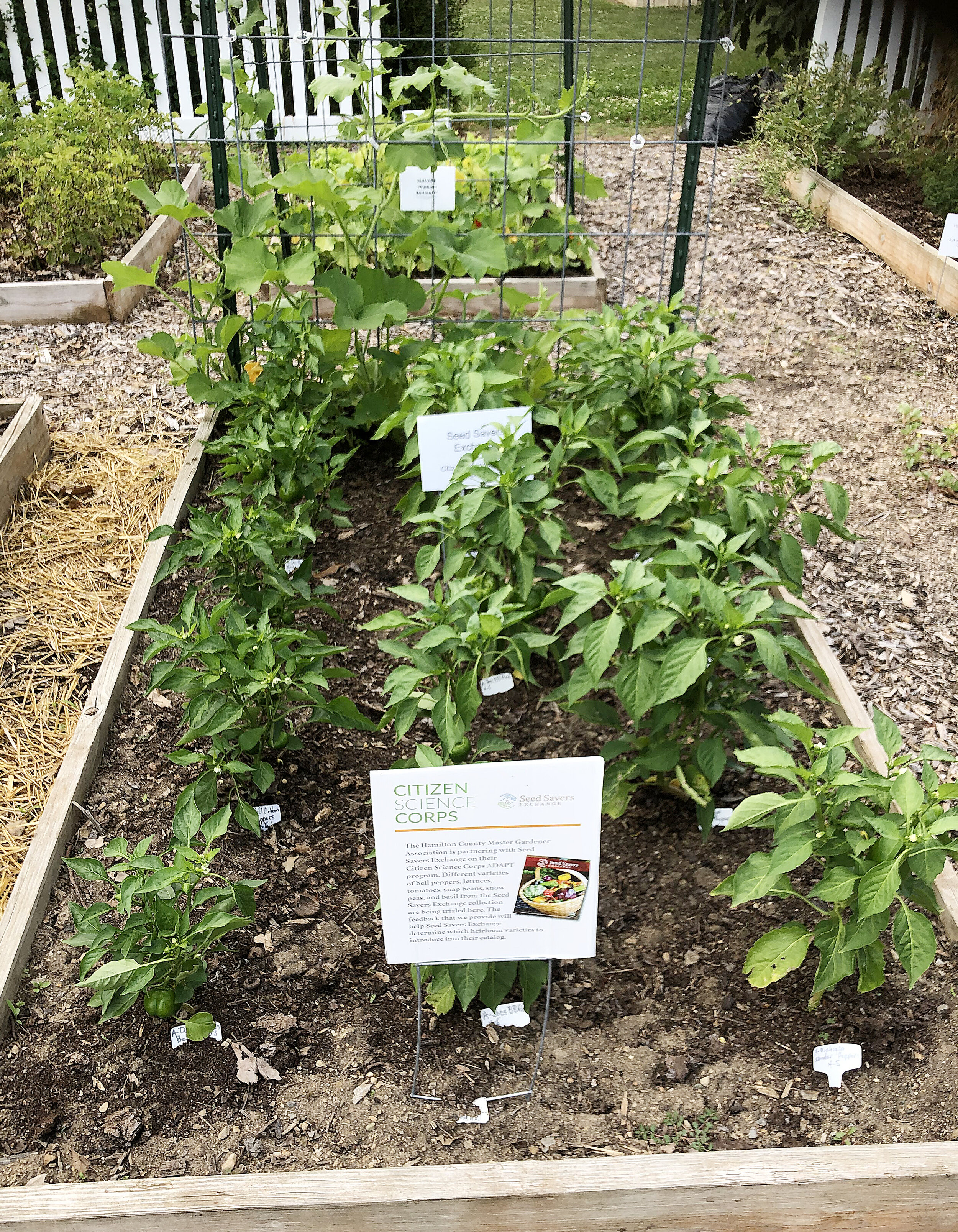SSE Citizen Scientist Spotlight: Meet Sue Gregg
/Sue Gregg (third from left) poses with fellow members of the Hamilton County Master Gardener Association.
The stories of our passionate Citizen Science Corps volunteers are as varied and interesting as those of the seeds that they grow. In celebration of Citizen Science Month, we are sharing three firsthand accounts written by 2019 Citizen Science Corps participants that shed light on what inspires them to step up to the plate to help SSE steward its collection for future generations through the ADAPT and RENEW programs. We launched the series with Tiffany Traverse of British Columbia, Canada, and continued it with Dorene Pasekoff of Pottstown, Pennsylvania. Our final “profilee”? Sue Gregg of Noblesville, Indiana.
Sue Gregg
In August 2018, I joined three other members of the Hamilton County Master Gardener Association in Noblesville, Indiana, to head to Decorah, Iowa, for Seed School at Seed Savers Exchange's Heritage Farm. Although we already had some seed-saving experience—two of us had established a free seed library, and we had all worked together to start the Central Indiana Annual Seed Swap, first held in January 2018 with over 300 attendees—we were each committed to learning more about the seed-saving process and sharing what we learned with our association.
Upon returning to Indiana from Decorah, we talked to others in our organization about our experiences there and asked them to join us on the association's Seed Committee. Our second seed swap, held in 2019, drew more than 400 attendees. With spring on the horizon, we decided to learn more about the RENEW and ADAPT programs.
After contacting Steffen Mirsky, the program's coordinator at Seed Savers Exchange, and learning about the opportunities, we presented the details of the Citizen Science Corps to our 300-plus membership. The Seed Committee decided to participate in both (ADAPT and RENEW) programs. The raised beds at the county fairgrounds were available for volunteers to work and for the public to view. In this space, we grew three varieties of tomatoes and three varieties of peppers for the ADAPT program as well as 'Mary Towne' pole beans for the RENEW program. We also asked for volunteers to participate in the ADAPT program by trialling varieties of vegetables in their home gardens and had 30 master gardeners take part!
Varieties from the Seed Savers Exchange collection thrive in a raised-bed garden planted by Citizen Science Corps participant Sue Gregg and fellow members of the Hamilton County Master Gardener Association.
By summer we were growing new and exciting vegetables in our gardens. The Seed Committee was anxious about what seemed a huge goal-to return 2,000 'Mary Towne' beans back to Seed Savers Exchange for the RENEW program. What if they didn't germinate? What if the weather was horrible? What if we had pest problems? We felt a sense of responsibility knowing SSE was counting on us! Once we looked up how many seeds a bean plant produces, some of the pressure lifted, but there were still a few "what ifs."
We enjoyed eating the produce, especially the 'Oma's Orange' tomatoes, and plan to grow some varieties again next year. We saved seeds from the tomatoes and peppers and sent most of the produce to our local food bank. We were thrilled with our harvest of 'Mary Towne' beans. Beyond the 2,000 seeds for Seed Savers Exchange, we collected an additional 1,000 seeds! Some of these will be planted in 2020, and some will be given to attendees at the Third Annual Central Indiana Seed Swap. We learned how to save seeds, shared what we learned, grew new vegetables, fed those in need, and helped preserve seed diversity. What a great year!
This is the final installment of a three-part series celebrating Seed Savers Exchange’s citizen scientists. Click here for more information on our Citizen Science Corps program.















